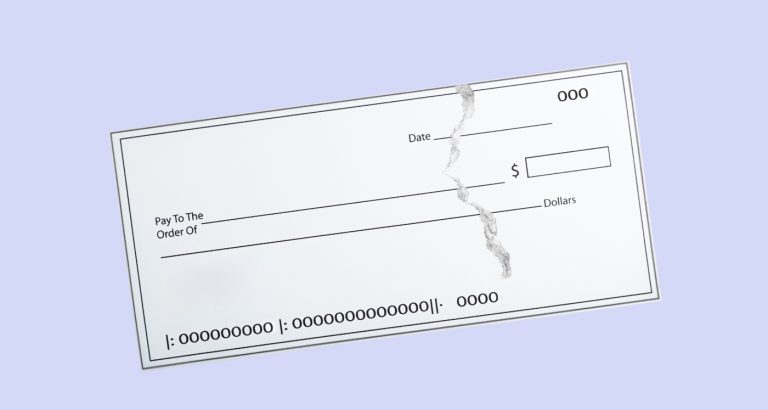How To Keep Track Of Bills And Payments Easily [6 Steps Anyone Can Do]
Keeping track of your bills can be a headache. Some bills are digital but can easily get lost in your email inbox.
Other bills still come by mail. It’s easy to lose track of when payments are due and whether you’ve paid yet.
The Best Way To Pay Bills On Time So They Aren’t Late
Instead of continually being late on your bill payments, follow this simple and intuitive method for keeping track of bills and payments.
How many checking accounts should I have for bills?
I recommend having at least 3 checking accounts for your bills. These accounts are purely for paying bills and don’t include savings accounts or an emergency fund.
As an affiliate partner of various brands and sponsored content, HerPaperRoute may earn commission on qualifying purchases. Disclaimer | Advertise With Us
- Checking Account #1: Joint account that’s strictly for bills.
- Checking Account #2: Partner’s checking account for personal purchases or subscriptions.
- Checking Account #3: Your checking account for personal purchases or subscriptions.
Keep in mind that these are merely suggestions. You can have as many or as few as you’d like. I’m showing you how me and my family keep our bills and payments organized since it’s worked so well for us.
Benefits Of Multiple Checking Accounts
The reason for having multiple checking accounts is to help divide up your money into clear categories. Many people run into the problem where they keep borrowing from the main pot of money that bills are paid out of.
Then by the time the bill comes due, you’ve come up short. By using separate checking accounts, you’re allocating that money for a specific job and it’s a lot harder to dip into the other pot.
In order to take from the other accounts, you’ll have to send in a money transfer request which usually takes a day or two. Knowing you don’t have instant access to the money makes it less tempting to spend on non-bills.
Another benefit of having multiple checking accounts is that each partner has their own account. At every paycheck, an agreed upon amount of money gets transferred to the individual accounts.
This money can be used for personal expenses, subscription boxes, or other categories that don’t benefit the household. For instance, my husband would pay for his tv sports pass subscriptions out of his account while I would pay for getting highlights out of my account.
Each couple can work out method that works best for them. We’ve found that putting set amounts of money into individual accounts gives each of us more freedom.
As long as we have the money in the account, I don’t need to talk about spending $150 on hair and he doesn’t need to justify spending $200 to watch sports on tv.
Bill Payment Methods: Which One Should You Choose?
In the past, the main way you paid your bills was to wait for your bill to arrive in the mail, write out a check, then send it back. Nowadays, there are tons more options. There is no one right bill pay method so choose the best one for you.
1. Automatic Bill Pay
Like the name suggests, this method automatically pays your bill before the due date. This is one of the easiest ways to make sure your bills are never late.
Some companies will even give you discounts for signing up for auto bill pay. If you don’t see a discount listed, it never hurts to call and ask if they offer one.
One potential issue with automatic bill pay is if you get lax in the tracking. If you don’t have a money buffer in your checking account, you may run into a situation where the bill is paid, automatically deducting the money.
If the money isn’t in the account, you could be charged an overdraft fee by your bank as well as a late fee from the bill company. Or even if you did have the money in the account, if you forgot the bill was being paid soon, you may have other plans for the money.
This method is extremely convenient though and takes the physical act of paying the bill off your plate. The key is to be organized and always have the money set aside.
Usually, with automatic bill pay, you’ll link your debit card or bank account to the bill so that it can be automatically charged. Just be aware of the rules for your debit card number changing when you get a new card so that you don’t end up with a missed payment.
2. Online Bill Pay
Online bill pay is like automatic bill pay but without the automation. Instead, you have to log into your account online and manually set up the payment.
This is great for all the bills you can’t set, or don’t want to set up, automatic bill payments for. Most payment processors have the ability to set the pay date into the future.
So if you have one day a month that you pay your bills but the bill isn’t due until later, you can set the payment date for the future. This also saves on checks, envelopes, and stamps.
Another helpful perk is that you’ll have electronic receipts of payment. You can organize those payment receipt emails into a folder of your inbox. Less paper clutter at home that you have to deal with.
When setting up online bill payments, make sure you know when deposits to your account will clear so you don’t overdraft.
3. Pay By Mail
Paying bills by mail is how it’s been traditionally done. Before the bill’s due date, you’ll receive a bill in the mail. It is a statement of the charges or the amount owed.
If you’ve signed up for electronic statements or bills, then you won’t be getting paper bills by mail so don’t wait around for them or you’ll be late.
If you did sign up for e-statements but want to pay by mail, you should be able to find a company address so payments can be sent to on the electronic bill or the company’s website.
When sending a check by mail, make sure you use a security envelope so that the inside contents can’t easily be seen by identity thieves.
4. Pay In-Store
Depending on the bill, you may be able to pay it in store. Many grocery stores, Walmart, CVS, HEB, etc. let you pay your cell phone bill, car registration, utilities, and more depending on the vendor.
This is a great way to save time if you’re frequenting those stores anyway. There’s no need to send a separate check to the company when you can pay in-person quicker.
Unfortunately, this option won’t be available for all of your bills but most of your basic household utilities or annual renewals from the city or state could be paid that way.
How To Keep Track Of Irregular Bills
Many bills don’t happen monthly and it can be easy to forget about them. To avoid being caught off guard when they’re due, I recommend setting up sinking funds for those bill categories.
Examples of irregular bills include:
- Property Taxes
- House Insurance
- Health Expenses
- Vehicle Insurance
- Car Registrations/Inspections
- Car Maintenance
- Life Insurance Premiums
- Veterinarian Bills
If the irregular bill happens annually or biannually, you know that it will be coming up. Instead of waiting until the last minute and stressing. Set up those sinking funds and build the bill into your budget.
Set aside a portion of the bill amount every month so that you’ll have the full amount when it comes due. Setting up a budget is easier than you think. I even break down Dave Ramsey’s recommended household budgeting percentages so there’s no guessing required.
![How To Keep Track Of Bills And Payments Easily [6 Steps Anyone Can Do] 2 budget book](https://herpaperroute.com/wp-content/uploads/2021/11/budget-blastoff-book-cover-graphic-400x533-1.jpeg)
Are You Sabotaging Your Budget?
See the budgeting mistakes that are holding you back in this FREE Budgeting ebook. Fix these and your budget will blast off!
How To Stay On Top Of Your Bills
For keeping your bills organized, I recommend using a simple checklist and monthly calendar. On your calendar, mark down the dates every bill is due. On the checklist, write down each bill’s name. Once the bill has been paid, check it off the list.
For the checklist, you can print off a list of your bills on a sheet of paper. To make it reusable, slide the paper into a page protector. Mark off each bill when it’s paid using a dry erase marker. Then once the month is over, erase the page protector to reuse again the next month.
I recommend keeping this setup on the side of your fridge or near where you pay your bills. Keeping it easily accessible and seen frequently will prevent you from forgetting about a bill.
6 Steps For Keeping Track Of Your Bills
By following the steps below, you’ll have an easy to use yet effective bill tracking and paying system. You won’t have to worry about being late on a bill if you keep everything organized.
Step 1: Have a Designated Spot for Bills
While it seems self-explanatory, making a designated bill spot in your home will get rid of a ton of bill frustration. How many times have you gotten the mail, see a bill, and toss it aside vowing to deal with it later.
The problem comes when the bill’s due date is fast approaching but you can’t remember where you put it. Organization is key for being able to keep track of bills.
How To Organize Paper Bills
If you have a desk or use part of your home you organize your finances, I recommend a bill organizer. It makes it easy for you to set aside all your bills as they come in.
Simply place the paper bills into a slot as they come in. Then when you’re ready to sit down and pay your bills, all of them are right in front of you.
How To Organize Online Bills
Electronic bills are even easier to organize than paper bills. In your email account, make a folder with the year. Then make subfolders for each month.
As the bills come in, put them in the current month. When it’s time to pay your bills, you’ll have all the online information in one email folder. This is far easier than trying to search through hundreds of emails.
Another option is to make an email account that’s only used for bills. Have all of your online bills go to this email address so that the messages don’t get lost in your more frequently used inbox.
Step 2: Set a Dedicated Time and Place to Pay Bills Monthly
Everyone’s schedule is busy so it’s understandable that paying bills gets pushed off to the last minute. Instead of having the predictable frantic scramble every month, set up a recurring date for yourself and your finances.
How often should you be paying bills? Two bill paying dates every month is probably easiest since most people get a bi-monthly paycheck.
Other options include weekly budgeting and once a month budgeting:
- Weekly Budgeting: With weekly budgeting, you set aside time every week for your bills. This is great if you’re starting out and need more frequent check-ins to get a handle of your money.
- Once-A-Month Budgeting: This method is better for the more experienced bill payer. Even though bills are only due one time a month, that’s a long time to not check in on your money.
But if this method works for you, go for it. With all of the automatic payments and scheduled payment options available, you could set up all of your bill payments in one go.
Whatever frequency you decide on, put a calendar invite on your phone with an alarm so that you don’t get busy with other tasks. Pay your bills at the same time and place every month to set yourself up with a routine.
Step 3: Make a List of All Bills, Amounts Owed, and Due Dates
The next step is to make a list of all your bills, how much you owe that month, and the due date. You can put this on a spreadsheet, whiteboard, or even a sheet of paper.
Organize the bills by due date from earliest in the month to latest. This way you’ll have a clear timeline of progressing due dates.
Step 4: Create A Bill Paying Calendar
This last step of bill organization requires that you place all your bill due dates into a calendar system. This can be as simple as printing off a blank calendar and writing in the dates of the month each bill is due.
This will give you nice clear visual overview of your monthly bills. If you’re a visual learner, you may be better able to understand how your monthly expenses are structured and make adjustments.
Or you could get more complex by adding each bill as a calendar reminder in your phone. Simply turn the reminder to repeat every month on the same date.
This method is a little intensive to set up initially, but once all the data is into your phone, you’re done for the foreseeable future. If something changes with a bill, you can easily go into the reminder and adjust the settings.
Once you’ve paid a bill, mark it off on the bill checklist as mentioned earlier in this post.
Related: How to Catch Up On Bills When You’ve Fallen Behind
Step 5: Sign Up For Bill Pay Reminders
For many monthly bills, you can opt-in for bill pay reminders in your account’s settings. Many times, the default is that you’ll get the reminders so unless you turned them off, you probably already receive them.
Google Calendar or phone calendar alerts are another way to set up reminders. Some calendar systems allow you to set up the alarm or alert for a specified time prior to the due date. This is a helpful reminder in case things get busy in your life for whatever reason.
Step 6: Monitor Your Credit Score For Free
Identity theft is a huge problem. An estimated 9 million Americans have their identities stolen every year. To make sure you aren’t one of them, or to stop it as soon as it happens, I recommend monitoring your credit.
Saving Money On Bills: Conduct Periodic Price Reviews
I wanted to include this final section covering something many people forget about. So many people sign up for a service and continue to pay that amount for years. They never go back to look at the current deals or see if a competing company offers a better price.
Since you’re setting up a bill payment system, build in a periodic price review for your bills. I like doing this yearly or a month before a policy is renewing.
If this seems like a daunting task, then use a service like Trim to do the hard work for you. Trim finds you lower prices on your internet, cable, and phone bills without you needing to be on hold for hours.
You don’t pay them a set price. Instead, they earn a percentage of however much money they saved you by the new deal they found. So if they can’t get you a better price on your current internet package, you don’t pay them anything.
How To Keep Track Of Bills And Payments – Conclusion
Now that you have an easy way to track and pay bills, you shouldn’t have any trouble meeting bill deadlines. Getting your bills organized the starting point for understanding where your money is going.
After you master bill payment tracking, you can move on to expanding your savings and retirement contributions. This is foundational for understanding personal finance. Once you get this, more and more financial lessons will start to make sense.
Let me know your favorite method of bill tracking in the comments.
Related Articles:



![How To Keep Track Of Bills And Payments Easily [6 Steps Anyone Can Do] 1 woman writing in her financial planner book How To Keep Track Of Bills And Payments](https://herpaperroute.com/wp-content/uploads/2021/11/How-To-Keep-Track-Of-Bills-And-Payments.jpeg)
![How To Keep Track Of Bills And Payments Easily [6 Steps Anyone Can Do] 3 entrepreneur planner profit business planner notion](https://herpaperroute.com/wp-content/uploads/2024/02/profit-business-planner_lg-copy.jpg)

![What Happens When You Pay Off Your Mortgage? [Step By Step] 5 What Happens When You Pay Off Your Mortgage? [Step By Step]](https://herpaperroute.com/wp-content/uploads/2021/11/What-Happens-When-You-Pay-Off-Your-Mortgage-768x410.png)



